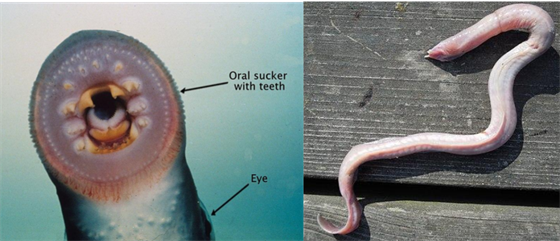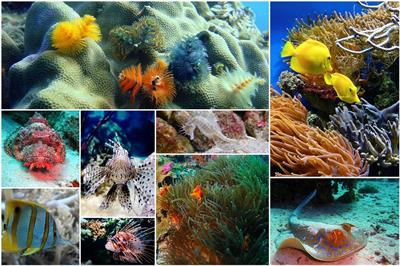PDF chapter test TRY NOW
Class Cyclostomata
These are jawless vertebrates and are hence known as agnathans. They are characterised by an elongated, eel-like body, circular mouth, slimy skin, and scaleless.
Other characteristics:
- The notochord is present throughout their life.
- They have fins and lack paired appendages.
- They have an organ-system level of classification.
- They are ectoparasites and hence depend on other vertebrates.

Petromyzon (Lamprey) and Myxine (Hagfish)
Class Pisces
These are fishes. Their body consists of scales or plates which cover the skin. They have two-chambered hearts. They have special respiratory structures known as gills through which they obtain the oxygen dissolved in water. They have a streamlined body and muscular tail that helps them move easily through the water.
Other characteristics:
- These are cold-blooded animals.
- They lay eggs.
- Their skeleton is made up of bones and cartilage.
- In some fishes, it is only bones; in some fishes like sharks, it is only cartilage, and in some, like tuna and rohu, it is both.
Example:
Synchiropus splendidus (Mandarin fish), Scoliodon (Dogfish), Labeo rohita (Rohu), Exocetus (Flying fish), Anabas (climbing perch), Male hippocampus (sea horse)

Class Pisces
Reference:
https://upload.wikimedia.org/wikipedia/commons/thumb/6/66/Myxine_glutinosa_no.JPG/512px-Myxine_glutinosa_no.JPG
https://pixabay.com/illustrations/fish-collage-photo-collage-1502406/
https://upload.wikimedia.org/wikipedia/commons/thumb/f/fe/River_lamprey_mouth_labelled.jpg/1024px-River_lamprey_mouth_labelled.jpg
https://pixabay.com/illustrations/fish-collage-photo-collage-1502406/
https://upload.wikimedia.org/wikipedia/commons/thumb/f/fe/River_lamprey_mouth_labelled.jpg/1024px-River_lamprey_mouth_labelled.jpg
